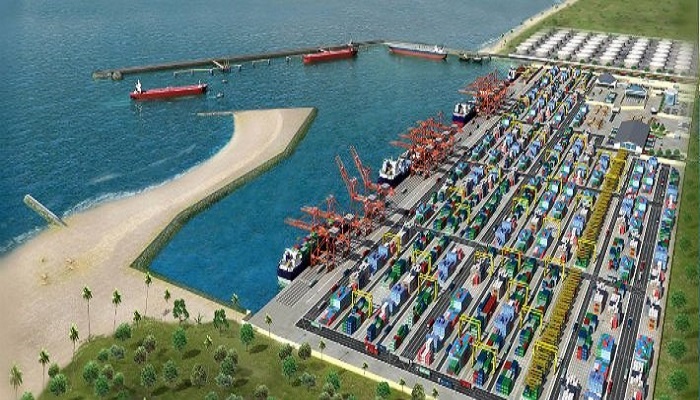President Muhammadu Buhari unveiled the $1.5 billion Lekki Deep Seaport project in Ibeju-Lekki, Lagos State, just months before his term expires.
The project is one of the most important projects of the Buhari administration, and it is expected to improve the Nigerian economy because the maritime industry is important for growth and economic development.
The port is expected to inject at least $361 billion into the economy, in addition to creating job opportunities for youth.
The Nigerian Ports Authority’s Managing Director, Mohammad Bello-Koko, explained that the development would result in economies of scale, which would eventually reflect on the cost of doing business in the country.
He even stated that some neighboring countries have expressed interest in bringing their cargoes through Lekki deep seaport.
In addition to cutting-edge infrastructure, Lekki Port is expected to become a next-generation container terminal and a game-changer in Nigeria and West Africa.
The port is Nigeria’s first deep seaport, with 13 quay cranes and a capacity of 2.5 million TEUs (Twenty-Foot Equivalent Units) on a 1.2-kilometer quay with a depth of 16 meters.
The facility, which has a capacity of up to 15,000 TEUs, is set to become one of the largest in West Africa.
Here are 10 things you should know about the Lekki deep sea port
The size: The Deep Seaport is one of West Africa’s best ports. At the commissioning, Sanwo-Olu stated that the vessels that will be arriving will be four times larger than the vessels that have been arriving at TinCan and Apapa ports.
Investors: The $1.5 billion project is a collaboration between the federal government, represented by the Nigerian Ports Authority, the Lagos State Government, the Tolarams Group (owners of the Lagos Free Zone), and China Harbour Engineering Company.
Economic Impact: According to the ICRC, the project’s economic impact would be $201 billion in revenue from duties, royalties, and taxes, as well as a $158 billion direct/indirect business impact.
Terminals: The port has three terminals: one for containers, one for liquids, and one for dry bulk.
Facility: The Facility is a multi-purpose port with well-designed marine infrastructure, including container (phase one), dry bulk, and liquid terminals (phase two). It has three container berths, three liquid berths, and one dry bulk berth.
Capacity: With a 1.2 million TEU annual throughput, the terminal can accommodate 18,000TEU container vessels.
Shareholding: The Nigerian government owns 5%, the Lagos government 20%, and Lekki Port Investment Holding Inc 75% via the Special Purpose Vehicle (SPV- Lekki Port LFTZ Enterprise Limited).
Location: The project is being built in a strategic location in Lagos. Lekki Port has a competitive advantage over any other port facility in the West African region due to its flexible and optimized layout and modern facilities.
Area: The land area is 90 hectares, and the concession term is 45 years, making it Nigeria’s first deep sea port and the deepest port in West Africa.
Jobs: Over 169,000 direct/indirect jobs are expected to be created as a result of the project.


